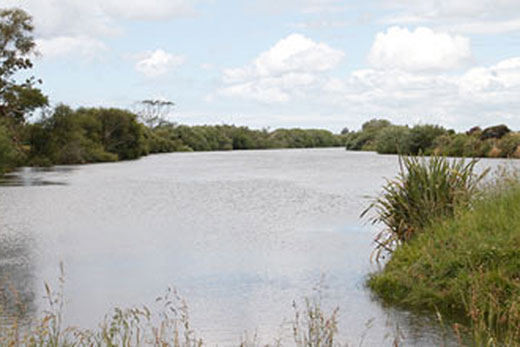Environmental initiatives at Affco's Rangiuru freezing works have achieved steadily improving water quality results for the Kaituna River.
Affco's Rangiuru freezing works have put in place environmental initiatives to help improve water quality at the Kaituna River.
Bay of Plenty Regional Council monitoring work has shown a steadily improving trend in one of the key indicators of water quality – bacteria, says Kaituna Catchments Manager Pim de Monchy.
'The improvement so far is due to some environmental initiatives from Affco's Rangiuru freezing works and Te Puke's sewerage treatment plant, as well as improvements in the way farmers use dairy effluent.
'It's heartening to see improvements in bacteria levels in the river, showing that good resource consent conditions and environmental work by farmers and companies like Affco is paying off.”
The river's water quality has been affected by stock grazing and nutrients washing into the river from surrounding farms, urban areas and industries such as Affco.
Affco Plant Manager Kevin Casey says the company had made great strides to improve the quality of its effluent flows into the Kaituna over the past 20 years.
In 1997 it installed four wastewater wetlands covering 3.5 hectares, and later upgraded three existing anaerobic ponds, increasing their volume by 60 percent and changing them to operate in series. In 2004 it installed two oxidation ponds with a total volume of 40,000 cubic metres.
'The wetlands are an important final treatment step for the wastewater after it's been treated in a sedimentation system, three anaerobic ponds and two oxidation ponds,” says Kevin.
'The effluent is already of high quality before it reaches the wetlands, and they further improve most aspects of wastewater quality, ‘polishing' the water before it's discharged to the river.”
Kevin adds processing improvements had also been made to reduce the amount of waste that entered the effluent stream, such as emptying animal stomach contents with minimal water.
'Water quality is improving in most indicators monitored by Affco and are stable in the remainder as a result of the company's improvements to their treated effluent discharge,” says Pim.
'Affco is a large industrial water user, and they're operating with a very high level of consent compliance these days. Their improvements, including their man-made treatment wetlands, have been a big part of the five-fold reduction in median bacterial contamination in the lower Kaituna since 1989.”
Water quality can be measured using key indicators, including phosphorus, nitrogen, sediment and bacteria. In the Kaituna River phosphorus and sediment have both remained stable since 1975 while bacteria loads are coming down, reducing 500 percent since 1989.
'Of the four, the only indicator worsening is nitrogen, which has been increasing 2 to 3 percent a year because of intensified land use and higher stocking rates in the area. The riparian protection landowners have put in place, sometimes with assistance from the Regional Council, is intercepting some of the phosphorus, sediment and bacteria, but it doesn't work so well for nitrogen,” adds Pim.
'Our next challenge is to look at nutrient management and work with stakeholders to stop the increase in nitrogen levels as well. This work will be part of the Regional Council and Te Maru o Kaituna's role in implementing the National Policy Statements on freshwater management, including both quality and quantity.”
Pim says the Regional Council had prioritised the Kaituna and Rangitaiki catchments for this work.



1 comment
Still
Posted on 23-11-2014 14:28 | By Capt_Kaveman
A long way from ideal
Leave a Comment
You must be logged in to make a comment.